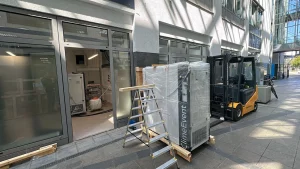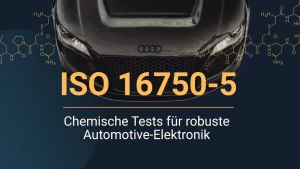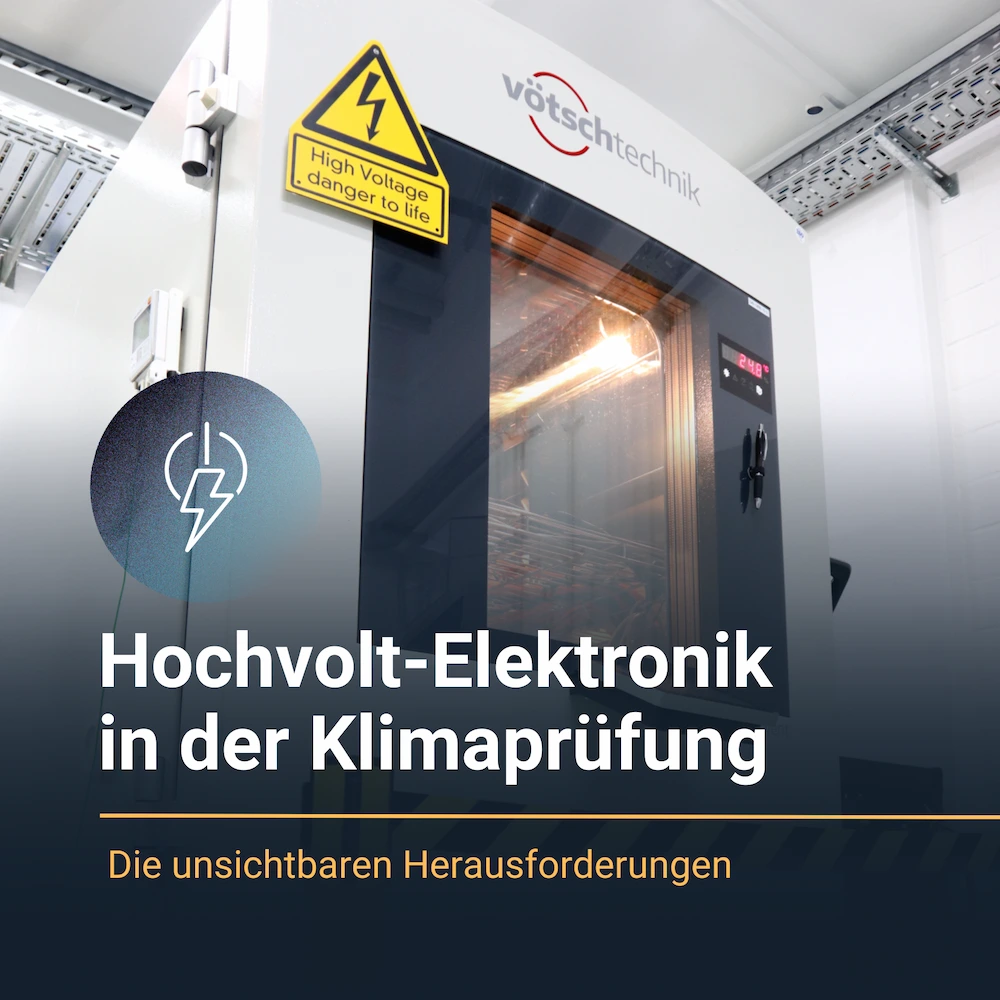Why Climate Testing for High-Voltage Electronics Is Particularly Demanding
High-voltage electronics are indispensable in modern vehicles, industrial plants, and power grids. But with increasing voltages and currents come new challenges – especially in climate testing.
Not every traditional humidity or temperature test accurately reflects real-world stress.
Here are the biggest problems – and how to solve them.
Challenge 1: Self-Heating & Microclimate
High-voltage components often generate significant self-heating.
What does that mean?
🔥 The component remains warmer than the surrounding environment.
💨 Moisture evaporates more quickly – condensation problems remain hidden.
⚠ Failures like leakage currents or electrochemical migration occur less frequently in the test than in real operation.
Solution:
✔ Measure temperature and humidity directly at the component – not just in the chamber.
✔ Test with varying load and pause times – to replicate real operating conditions.
✔ Intentionally provoke condensation phases to test worst-case scenarios.
Challenge 2: Distorted Temperature Cycles
Many components do not cool down as much during a temperature cycle as the climate test specifies.
💡 Why is that a problem?
➡ Material fatigue is not fully revealed.
➡ Thermal stress is lower than in the field.
➡ Critical weak points only appear later – often at the end customer.
Solution:
🔹 Simulate cooling phases without load to create realistic temperature cycles.
🔹 Measure temperature directly at critical components, not just in the environment.
🔹 Conduct “worst-case” tests with intensified temperature changes to expose real stress.
Challenge 3: Masked Insulation Failures
At high voltages, the risks increase for:
⚡ Partial discharges – gradual destruction of insulation.
⚡ Flashovers & breakdowns – especially on moist or dirty surfaces.
⚡ Electrochemical migration – corrosion and contact issues due to high voltage differences.
Solution:
🔍 Continuous insulation monitoring during the test.
🛠 Non-destructive testing methods like CT scanning to detect hidden defects.
📏 Standard-compliant tests according to IEC 60068-2-30, -38 & -78, but with high-voltage-specific adaptations.
Conclusion: Conducting Climate Tests for High-Voltage Electronics Properly
Standard climate tests are often not sufficient for high-voltage systems.
Those seeking realistic results must:
✅ Consider microclimate & self-heating.
✅ Simulate condensation & worst-case scenarios.
✅ Include additional insulation and material tests.
enveon helps to test high-voltage components realistically – before they fail in real-world use.
How do you ensure your high-voltage products remain reliable over time? 🚀



